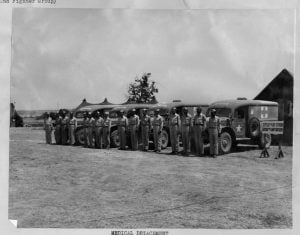United States Army Aeromedical Support to African Fliers, 1941 – 1949: The Tuskegee Flight Surgeons
Most active-duty United States Air Force pilots and flight surgeons serve less than four years with one unit. Segregation policies in early 1941 required a few African American flight surgeons to support black student pilots at Tuskegee, Alabama from cadet training in preflight ground school until graduation with pilot wings then through fighter training, deployment to the Mediterranean Theater, combat operations, redeployment, peacetime service and disbandment on 1 July 1949. Approximately a thousand Tuskegee-trained pilots and seventeen flight surgeons served together at bases in the U.S. Six flight surgeons – Maurice C. Johnson, Vance H. Marchbanks, Jr., Harry Anderson, Bascom C. Waugh, William K. Allen and Arnold J. Maloney – lived under combat field conditions in North Africa, Sicily and Italy with Tuskegee Airmen of the 99th Fighter Squadron and the 332nd Fighter Group. The Tuskegee Airmen have been recognized and honored many times. Their flight surgeons deserve equal recognition and honor for aeromedical accomplishments demonstrably equal to any in the Army Air Forces. This academic study reports the background and details of their aeromedical support.
We give particular attention to Col Vance H. Marchbanks Jr., M.D., who served as chief flight surgeon to his childhood friend, General Benjamin 0. Davis, Jr., during and after World War II.
Read the full report at https://apps.dtic.mil/sti/pdfs/ADA470652.pdf


